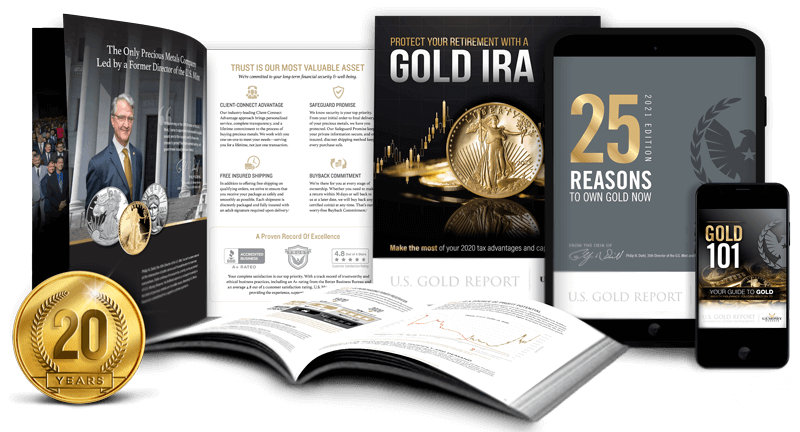Lately, there has been a growing curiosity in various funding methods, notably within the realm of retirement financial savings. Among these methods, Gold Particular person Retirement Accounts (IRAs) have emerged as a well-liked choice for those searching for to diversify their portfolios and protect their wealth against inflation and economic uncertainty. This article goals to offer an in-depth understanding of what a Gold IRA is, the way it capabilities, its advantages and disadvantages, and the key concerns for potential investors.

What is a Gold IRA?
A Gold IRA is a kind of self-directed Individual Retirement Account that enables investors to hold physical gold and different treasured metals as part of their retirement portfolio. In contrast to traditional IRAs, which typically consist of stocks, bonds, and mutual funds, Gold IRAs present the opportunity to spend money on tangible belongings. Any such account is governed by the same IRS guidelines and laws as traditional IRAs, however with particular pointers regarding the sorts of metals that may be held.
Forms of Treasured Metals Allowed
The IRS has established certain standards for the sorts of treasured metals that may be included in a Gold IRA. These metals must meet particular fineness requirements and be produced by accredited mints. The most commonly accepted metals embrace:
- Gold: Must have a minimal purity of 99.5%.
- Silver: Will need to have a minimum purity of 99.9%.
- Platinum: Must have a minimal purity of 99.95%.
- Palladium: Should have a minimal purity of 99.95%.
Investors can choose from numerous varieties of these metals, including coins, bars, and rounds, so long as they meet the IRS standards.
How one can Arrange a Gold IRA
Organising a Gold IRA includes several steps, which embrace:
- Choosing a Custodian: Buyers must select an IRS-authorized custodian to manage their Gold IRA. This custodian will handle the acquisition and storage of the valuable metals.
- Funding the Account: Buyers can fund their Gold IRA by way of various means, including rolling over funds from an present retirement account, making a direct contribution, or transferring belongings from one other IRA.
- Choosing Precious Metals: Once the account is funded, buyers can choose the particular gold, silver, platinum, or palladium products to incorporate of their IRA.
- Storage: The IRS requires that each one bodily metals held in a Gold IRA be stored in an authorised depository. Investors cannot take physical possession of the metals whereas they’re within the IRA.
Advantages of Gold IRAs
Gold IRAs offer several advantages that make them a sexy option for many investors:
- Inflation Hedge: Gold has historically been viewed as a safe haven during times of economic instability and inflation. As the worth of paper currency decreases, gold tends to retain its value, making it a possible hedge in opposition to inflation.
- Portfolio Diversification: Together with gold and different precious metals in a retirement portfolio may help diversify investments, decreasing total risk and volatility.
- Tax Advantages: Like conventional IRAs, Gold IRAs provide tax benefits. If you liked this article so you would like to collect more info pertaining to Iragoldinvestments.Org kindly visit our own web site. Contributions may be tax-deductible, and the expansion of the funding is tax-deferred until withdrawals are made.
- Tangible Asset: In contrast to stocks or bonds, gold is a bodily asset that buyers can hold in their palms. This tangibility can present a way of security for individuals who prefer to invest in onerous assets.
Disadvantages of Gold IRAs
Whereas Gold IRAs current a number of advantages, there are additionally disadvantages to consider:

- Increased Fees: Gold IRAs usually include larger fees in comparison with traditional IRAs. These fees can embody custodian charges, storage charges, and transaction charges for buying and promoting treasured metals.
- Limited Investment Choices: Gold IRAs are primarily focused on treasured metals, which can limit diversification alternatives compared to a broader vary of funding choices accessible in traditional IRAs.
- Market Volatility: The price of gold will be unstable, influenced by factors comparable to geopolitical events, currency fluctuations, and modifications in demand. This volatility can have an effect on the overall performance of a Gold IRA.
- Regulatory Compliance: Buyers must adhere to particular IRS laws concerning the varieties of metals and storage necessities, which might add complexity to managing the account.
Key Considerations for Investors
Before investing in a Gold IRA, potential traders should consider several elements:
- Analysis Custodians: It is crucial to decide on a reputable and skilled custodian who specializes in Gold IRAs. Traders ought to search for transparency in charges, customer support, and a monitor document of compliance with IRS regulations.
- Perceive Charges: Traders should thoroughly evaluation and perceive all charges related to a Gold IRA, together with setup charges, annual maintenance charges, and storage charges. Comparing a number of custodians may help establish the most effective worth.
- Evaluate Investment Targets: Buyers should assess their financial objectives and threat tolerance before committing to a Gold IRA. Understanding how gold suits into an general investment strategy is important for making knowledgeable selections.
- Keep Informed: The treasured metals market can change quickly, and staying knowledgeable about market tendencies, economic indicators, and geopolitical occasions will help investors make timely choices relating to their Gold IRA.
Conclusion
Gold IRAs characterize a unique investment opportunity for individuals seeking to diversify their retirement portfolios with precious metals. While there are advantages and disadvantages to think about, understanding the mechanics of a Gold IRA can empower buyers to make informed choices. As with any funding, thorough analysis, cautious planning, and session with monetary advisors can help individuals navigate the complexities of Gold IRAs and align their investments with their long-term monetary targets.



